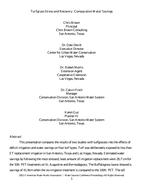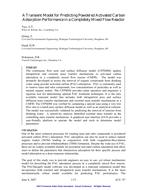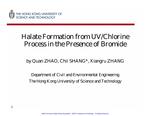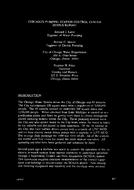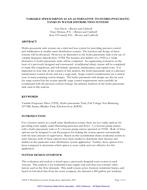Provide PDF Format
AWWA SOURCES55599
- Turfgrass Stress and Recovery: Comparative Water Savings
- Conference Proceeding by American Water Works Association, 01/01/2002
- Publisher: AWWA
$12.00$24.00
This study focused on the potential for water savings due to the stress recovery capacity of three warm season and one cool season turfgrass. Typical turf water conservation studies have focused on water savings obtained while maintaining optimal visual quality throughout the summer months with peak environmental stress. The studies which are presented in this paper found that four common turfgrasses, Common bermudagrass, buffalo grass, St Augustine and tall fescue in two southwest environments, San Antonio, Texas and Las Vegas, Nevada, showed recovery of visual quality after declining to suboptimal levels during peak summer months. By focusing on spring and fall turf quality and educating the homeowner to the turf's physiological capacity to endure and recover from stress, greater water savings can be achieved. Control and stress plots were evaluated at various ratios from 110 to 50 percent ETo. Irrigation frequencies were varied. The impacts of shade versus full sun were also evaluated on the warm-season grasses, while the impacts of varying nitrogen levels were evaluated on the cool season turfgrass. Water savings for the various treatments versus the control were calculated and ranged as high as 40 percent with mild stress and higher with moderate visual stress levels. Analysis of variance is presented on the various treatment effects on visual quality and water savings. Significant variation was found due to irrigation quantity, but not to irrigation frequency. Turf quality trends over time are also presented. The results of these two studies suggest that greater water savings can be achieved in turfgrass water conservation than previously reported. Homeowners' yards were used in the San Antonio study and homeowners expressed satisfaction with an approach that allowed mild to moderate levels of stress to develop in their lawns when they were made aware of the relationship of ETo to plant water demand and the drought hardiness of the turf that was present in their yard. As the daily high temperatures declined with the advent of fall, the visual recovery of the turfgrass quality reinforced this water conservation approach. These two studies demonstrate the potential for a new approach to outdoor water conservation, in which turf managers and homeowners are educated about turf recovery potential in order to achieve greater water savings during hot dry summers. Includes 3 references.
Related Products
AWWA ACE65270
A Transient Model for Predicting Powdered Activated Carbon Adsorption Performance in a Completely Mi..
$12.00 $24.00
AWWA DSS65662
Variable Speed Drives as an Alternative To Hydro-Pneumatic Tanks In Water Distribution Systems..
$12.00 $24.00

